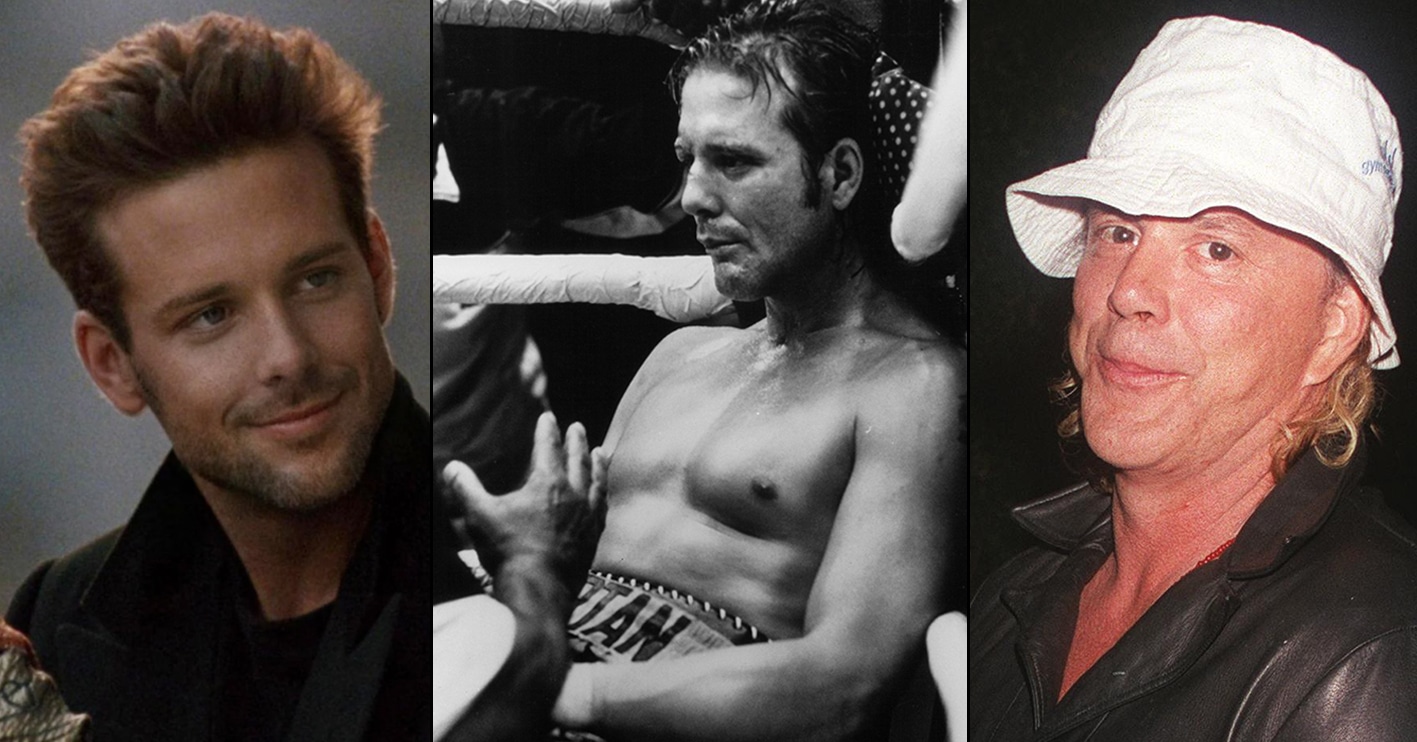Mickey Rourke always wanted to prove himself. A handsome, charismatic Hollywood star in his heyday, Rourke’s restless and competitive spirit saw him, at his height, take a break from acting in favour of his first love: boxing. He would never be the same again. How did this star of many faces go from a sex symbol and celebrated leading man in the 80s, to a shunned “has-been” by the 90s?

Boxing first, acting second
Born Philip Andre Rourke Jr in Schenectady, New York in 1952, Mickey Rourke was raised with his younger brother Joey and sister Patricia. When his parents divorced, Mickey’s mother Annette married a Miami Beach police officer with five sons of his own.
As a boy, Rourke’s new blended family moved to South Florida, where Mickey threw himself into sports at the Boys Club of Miami. Training in self-defence, Rourke discovered a love of boxing and won his first match at the age of 12, weighing 112 pounds.
Rourke had shown promise as a young amateur boxer, winning 27 of his 30 matches, including 12 straight knockouts. He suffered concussions early on, however, and in 1971, doctors advised the then-19-year-old to take a break from the sport. It was then that Rourke turned to acting.
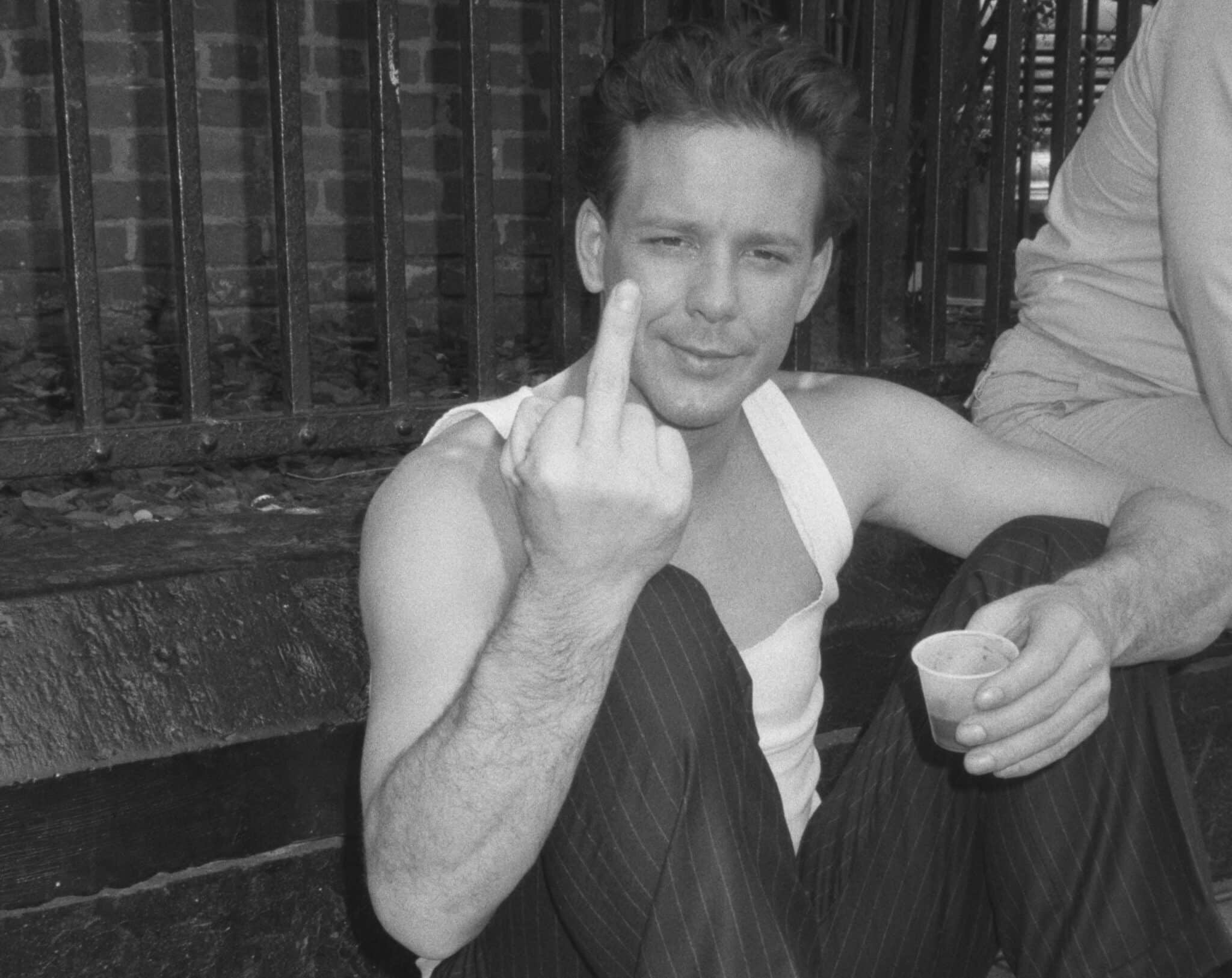
As a student, Rourke’s director friend at the University of Miami encouraged him to join the cast of the stage show Deathwatch as Green Eyes, and Rourke became obsessed with theatre.
With a loan of $400 from his sister, Rourke moved to New York to study with Actors Studio mentors Walter Lott and Sandra Seacat. He joined the Actors Studio after giving what founder Elia Kazan described as “the best audition in 30 years.”
Rourke’s movie debut was Steven Spielberg’s 1941, where he would play the minor role of Private Reese. But he would soar to fame in 1980 with Body Heat, playing a dashing arsonist, while his performances in Diner, Rumble Fish and The Pope of Greenwich Village further established him as a rising star in Hollywood. It was 9 1/2 Weeks, though, that made Rourke a sex symbol.

“I had no respect for myself being an actor”
The 1986 erotic drama cast Rourke as a Wall Street broker, a character that he had little interest in researching, but for whom he underwent rigorous workouts to play. The film was a hit, making $100 million worldwide, and established Rourke as a hot new star.
In the following years, Rourke began bringing his on-screen sex symbol persona into the real world. Though Rourke was married to actress Debra Feuer at the time, “I lived the life,” he told Bild am Sonntag in 2021. “Parties, women, there was never an evening when I stayed at home. It was wild.”
Rourke followed his 9 1/2 Weeks success with lead roles in Barfly and Angel Heart, both of which were critically acclaimed, but his favourite sport still lingered in his mind. In 1988, Rourke wrote and starred in his own boxing movie, Homeboy, alongside Christopher Walken, playing a cowboy and boxer whose next fight could prove lethal.
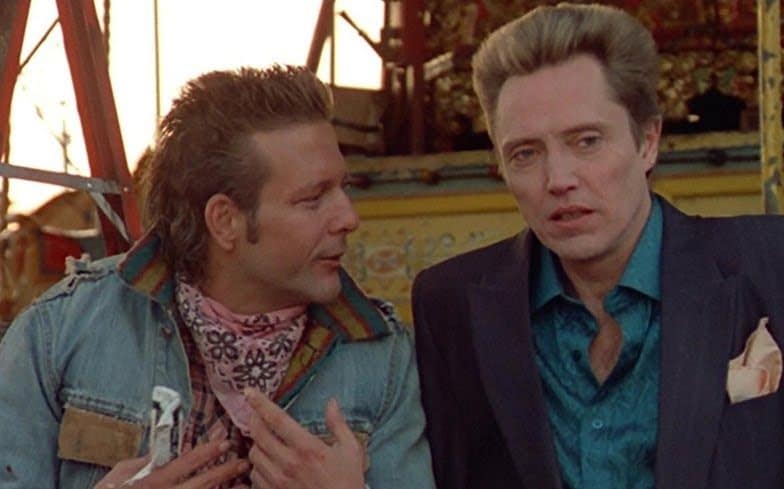
Rourke soon thereafter became disenchanted with Hollywood. Openly disdainful of fellow actors (Rourke once described Hollywood royalty Warren Beatty as “one of the creepiest puke-a**es I ever met in my life”), collaborators began to have mixed feelings about him, too.
Rourke’s intense method saw him be emotionally and physically abusive towards 9 1/2 Weeks co-star Kim Basinger, while Angel Heart director Alan Parker later said: “When I knew him, he was the most exciting young actor in America…I think he went a bit off the rails after that.”
Amid his partying lifestyle, Rourke entered what would be an eight-year battle with addiction to drugs and alcohol, and his unpredictable behaviour led to problems on film sets. Around this period, he missed out on a major movie role after getting into a fight with a drug dealer.

In the 1990 erotic thriller Wild Orchid, Rourke would also show off the first clear signs of his developing taste for cosmetic surgery, appearing in the film with tight, swollen cheeks, apparently the result of cheek implants.
Having turned down roles in a number of blockbusters, including The Silence of the Lambs, Platoon and Beverly Hills Cop, by the early 90s Rourke was “self-destructing”; he later admitted to having “no respect for myself being an actor”. And so, in 1991, Rourke did the unthinkable: he left the bright lights of Hollywood to become a boxer.

Training with the best
“[Boxing] was something that I loved to do and that I enjoyed; that was very therapeutic for me,” Rourke later explained. “I was able to just let out and get away from that acting c**p. Because I had lost the passion and the desire and the respect for the acting and it really maybe wasn’t the acting, it was that I really lost all of those things from myself.”
In 1991, Rourke began training with Freddie Roach, the former professional boxer who would later win fame for coaching Manny Pacquiao, Miguel Cotto and Amir Khan.
“Mickey offered me a job training him in Hollywood,” Roach later recalled. “I was there for seven days; he showed up in the gym one day of seven… [I told him], ‘You tell me you like boxing, and you like boxing, but you show up one day out of seven – you waste my time.’ I ripped him so bad he actually cried.”

Roach left for Las Vegas, while Rourke called him every day for a month, begging him to return. “Freddie humiliated me, embarrassed me and reduced me to the fact that I was not giving 100 per cent, I was not being a professional and I was setting myself up to not be as good as I could be,” Rourke stated. Eventually, Roach agreed to give Rourke a second chance, setting up a brand new gym in Hollywood to focus his attention on the star.
Roach’s training was relentless, as Rourke came to discover. “I remember, sometimes, I would drop my left arm after I threw a jab, and Freddie would snap off his mitt and cork me on the jaw with his right hand in a closed fist,” Rourke described. “And I wouldn’t drop my left arm again. Or, if I didn’t have my right hand up high enough, Freddie had a damn good left hook himself, and he’d sock me right me on the chin.”
“I respected that, you know?” he elaborated. “Sure, he was trying to hurt me a little bit, but he was doing it so that someone else wouldn’t do it to me in a real fight.”
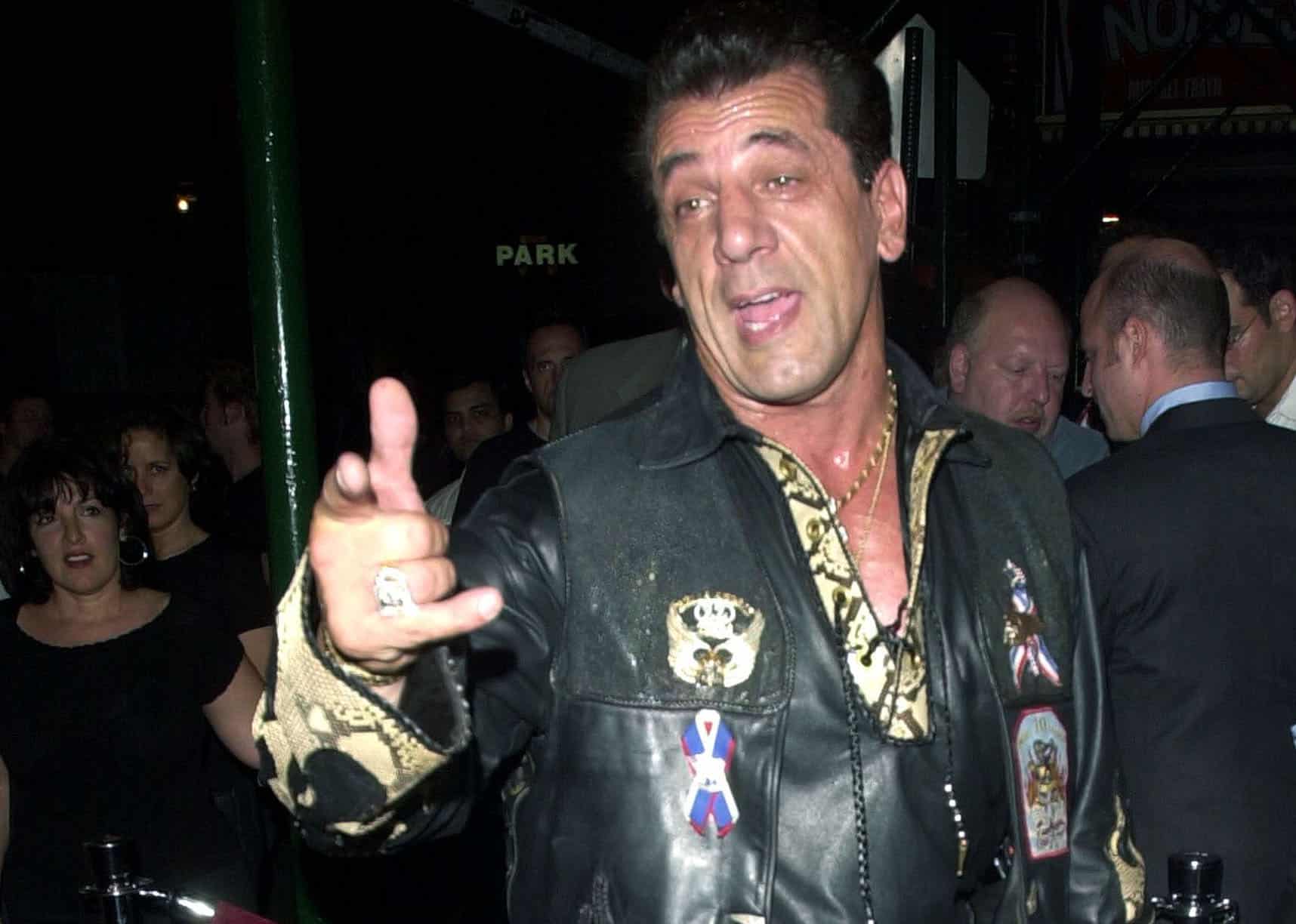
Roach’s coaching forced Rourke into a disciplined routine, shedding his unruly behaviour. “One of the things I lacked as an amateur and lacked as an actor was concentration and discipline… That’s something that Freddie Roach instilled in me with boxing, and that I have been able to take back with me to acting. It’s about being on time, being professional, being accountable.”
Rourke also sought out mentorship from Chuck Zito, who aside from boxing was a stuntman, Hells Angels New York President and bodyguard to Bon Jovi and Liza Minnelli. Having picked Guns N’ Roses hit Sweet Child O’ Mine as his entrance tune, Rourke was ready to enter the ring as a professional.

Undefeated
Travelling to Spain, Germany and France, Rourke fought eight times between 1991 and 1994, undefeated with two draws and four knockouts. However, the media soon speculated that the fights weren’t legitimate, with a 1994 issue of World Boxing magazine bearing the headline, ‘Mickey Rourke: Acting Like A Boxer… Or Boxing Like An Actor?’
Followed by a film crew, Rourke was knocked unconscious while sparring in a prison gym in Argentina with former World Middleweight Champion Carlos Monzon. He was also knocked out for three minutes while sparring with Thomas ‘The Hitman’ Hearns.

Rourke later described the fight with Hearns as “the biggest mistake of my life”: “By about midnight when I was back home, I felt like I was going to throw up and I was trying to call a doctor but I couldn’t push the buttons on the phone. What I had, and I’d never heard of it before, was a delayed concussion, from that punch.”
Rourke’s face would be badly damaged from boxing. He said the sport made a “mess of my face,” requiring plastic surgery. “I had my nose broken twice. I had five operations on my nose and one on a smashed cheekbone,” he said. “I had to have cartilage taken from my ear to rebuild my nose and a couple of operations to scrape out the cartilage because the scar tissue wasn’t healing properly.”
Along with his nose (broken twice during his boxing revival), Rourke suffered serious injuries during this spell, including a a split tongue and a fractured cheekbone.
“I went to the wrong guy to put my face back together”

According to The Guardian, Rourke had four sessions of reconstructive surgery to repair his face – but the star wasn’t happy with the results. “Most of it was to mend the mess of my face because of the boxing,” he commented in 2009, “but I went to the wrong guy to put my face back together.”
In 1994, at the age of 42, Rourke was forced to hang up his gloves once again due to the risk of brain damage. He had earned $1 million a year from professional boxing – but on his return to Hollywood, he would struggle to make ends meet.
Rourke had first developed a massive spending habit in the late 80s, once buying six Cadillacs in cash and giving them away to his friends. In 1986, he purchased a bulletproof car for nearly $100,000 and only drove it five times. More of Rourke’s money fed his drug addiction. By the mid-90s, however, Rourke’s boxing career was over and – now looking nothing like the movie star audiences remembered – his acting career wasn’t much healthier.
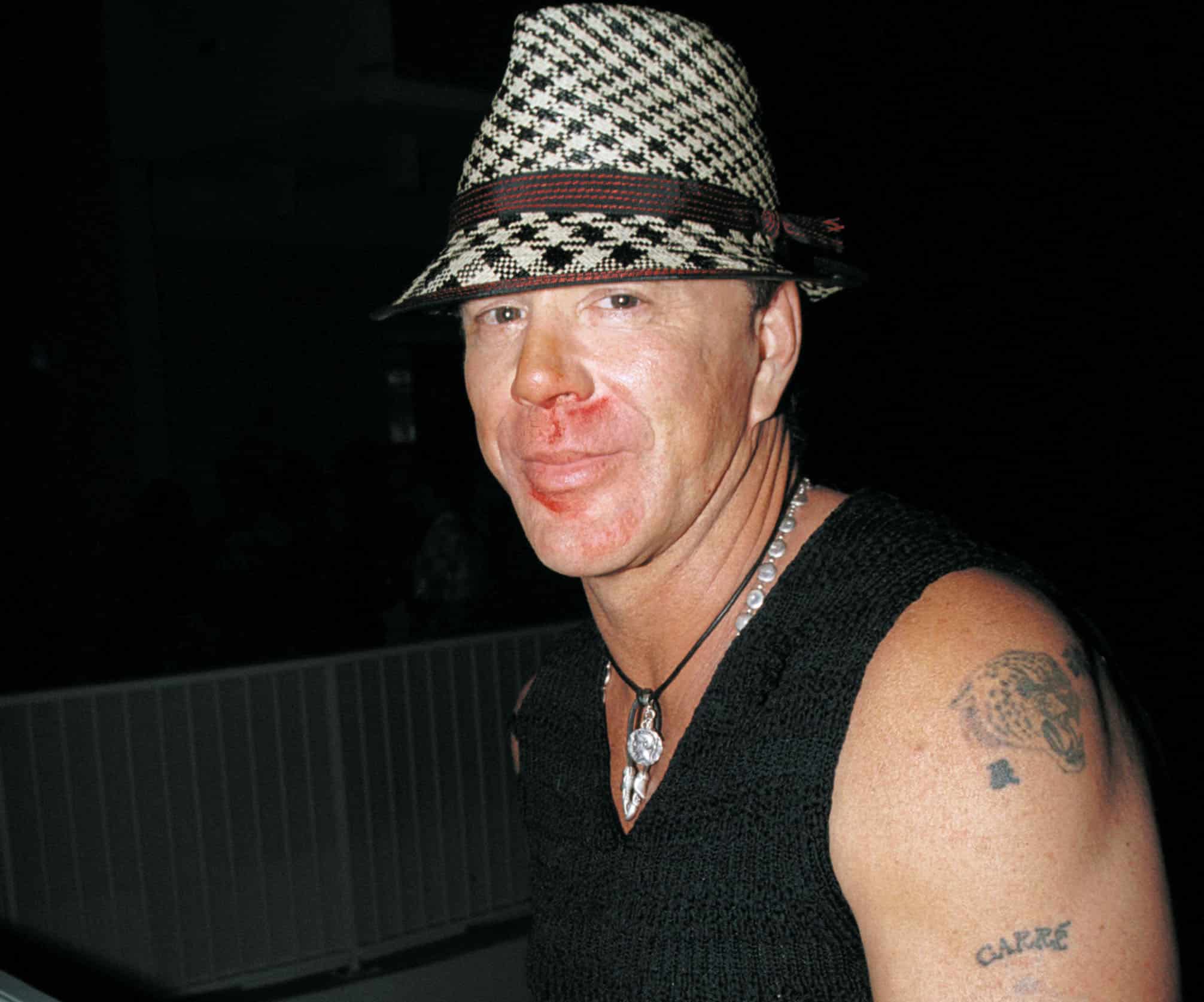
“Nobody knew just how broke I was,” Rourke later told The Daily Mail. “I was paying $500 a month for a one-room apartment with a yard for my dogs. A friend used to give me a couple of hundred dollars a month just to feed myself. I’d be calling up my ex-wife and crying like a baby.”
No director wanted to cast the volatile actor with the changed face. As Alan Parker summarised it, “Working with Mickey is a nightmare. He is very dangerous on set because you never know what he is going to do.”
“I stupidly said acting wasn’t a job for a real man,” Rourke noted. “I threatened producers, raged at directors, forgot my agent’s name. I really burned my bridges.”

Rourke returned to film and TV work in the 1990s and early 2000s, but his roles were few and far between. Sylvester Stallone was one of the few who still believed in Rourke, casting him in the 2000 movie Get Carter as a favour.
Likewise, an unnamed therapist took pity on Rourke, giving him free therapy sessions, three days a week. Rourke also found solace in adopting rescue dogs.
He found success as the brutish Marv in 2005’s Sin City, then in 2008 found the perfect opportunity to channel his split passions and frustrations into a major role. He took the lead in Darren Aronofsky’s The Wrestler, playing a sports star with ailing health. Rourke trained in WWE wrestling and put on 25 pounds of muscle for the role; he earned an Oscar nomination for his efforts.
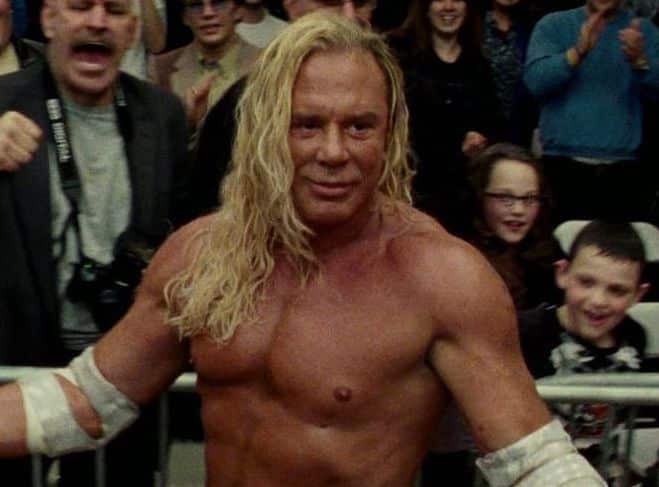
After his success in The Wrestler, Rourke briefly found himself back on top, taking roles in Iron Man 2, Immortals and The Expendables. But this streak was not to last, as Rourke once again proved a difficult figure among Hollywood’s stars.
He called Tom Cruise a “c***” for his anti-therapy comments; he derided the Marvel franchise as “mindless” and labelled Robert Downey Jr a “little p***k”.
It was this souring of his Hollywood relationships, perhaps, that drove Rourke back to boxing in 2014. A one-off comeback fight at the age of 62, however, plunged Rourke into the headlines for its controversy.

After a 20-year break from the sport, Rourke won his 2014 exhibition match in the second round, defeating 29-year-old Elliot Seymour. Seymour later claimed that he was paid $15,000 to throw the fight, while the Daily Mail reported that Seymour was a homeless fighter from Rourke’s own gym back in Hollywood.
Over the decades, various cosmetic surgeons have weighed in on Rourke’s changing appearance. Dr Hala Elgmati suspects that Rourke has had extensive botox, cheek fat injections, lip fillers, a face lift, a neck lift, and an artificial cosmetic wig glued to his scalp.
“Looking back to when Mickey was a fresh-faced 19-year-old, he was so handsome,” she has commented to The Mirror. “Even up until his forties, with a little sign of ageing, he looked masculine and attractive.
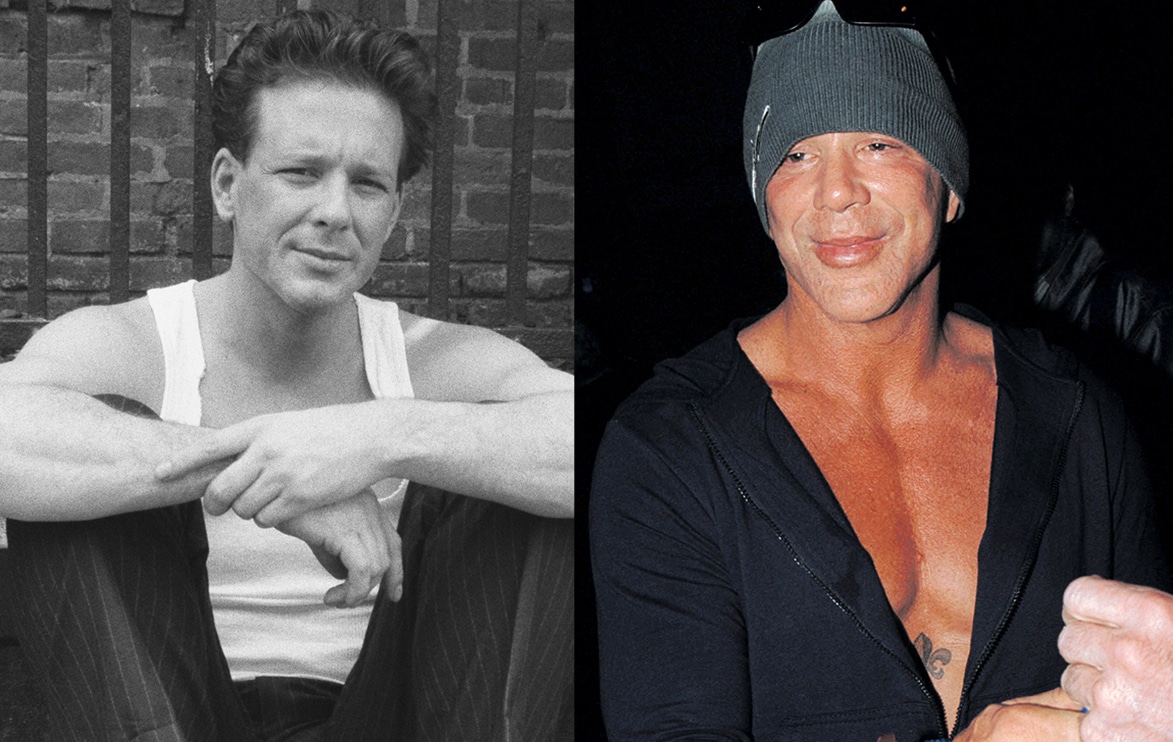
“But the work Mickey has done has negatively affected his facial proportions, to the point where it’s now quite jarring to the human eye… His muscles are now in an almost permanently paralysed state from constant botox,” she added.
Since 2009, Rourke has been in a relationship with the Russian model Anastassija Makarenko. He has drifted back into small roles in lesser-known movies lately. He also featured on The Masked Singer in 2020.
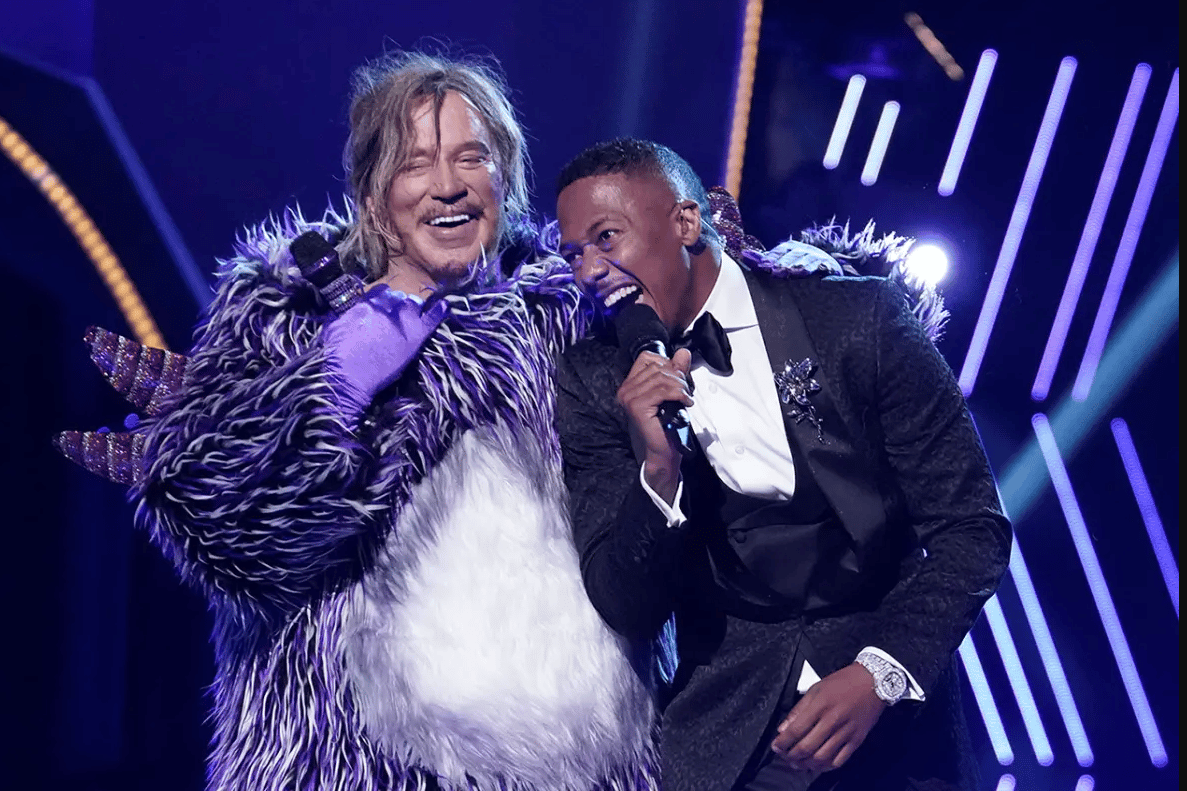
Speaking on his transformation, Rourke has said: “The mistake that I made in the past – well, I was fortunate enough to work with like Adrian Lyne and [Francis Ford] Coppola, Alan Parker and guys like that, but when I would take a job for the money and I didn’t like the script, the script didn’t have any integrity and I wouldn’t have any respect for the director.”
“That’s when I would go apes**t and that’s when all my hell started. It’s because I started to disrespect what I was doing, what I was, what my profession was, and that’s when it all went berserk,” he added. “So I can only work with people that I respect, material that has integrity right now. As long as I can do that, I can maintain the consistency of being responsible, which is what it’s all about right now for me.”

